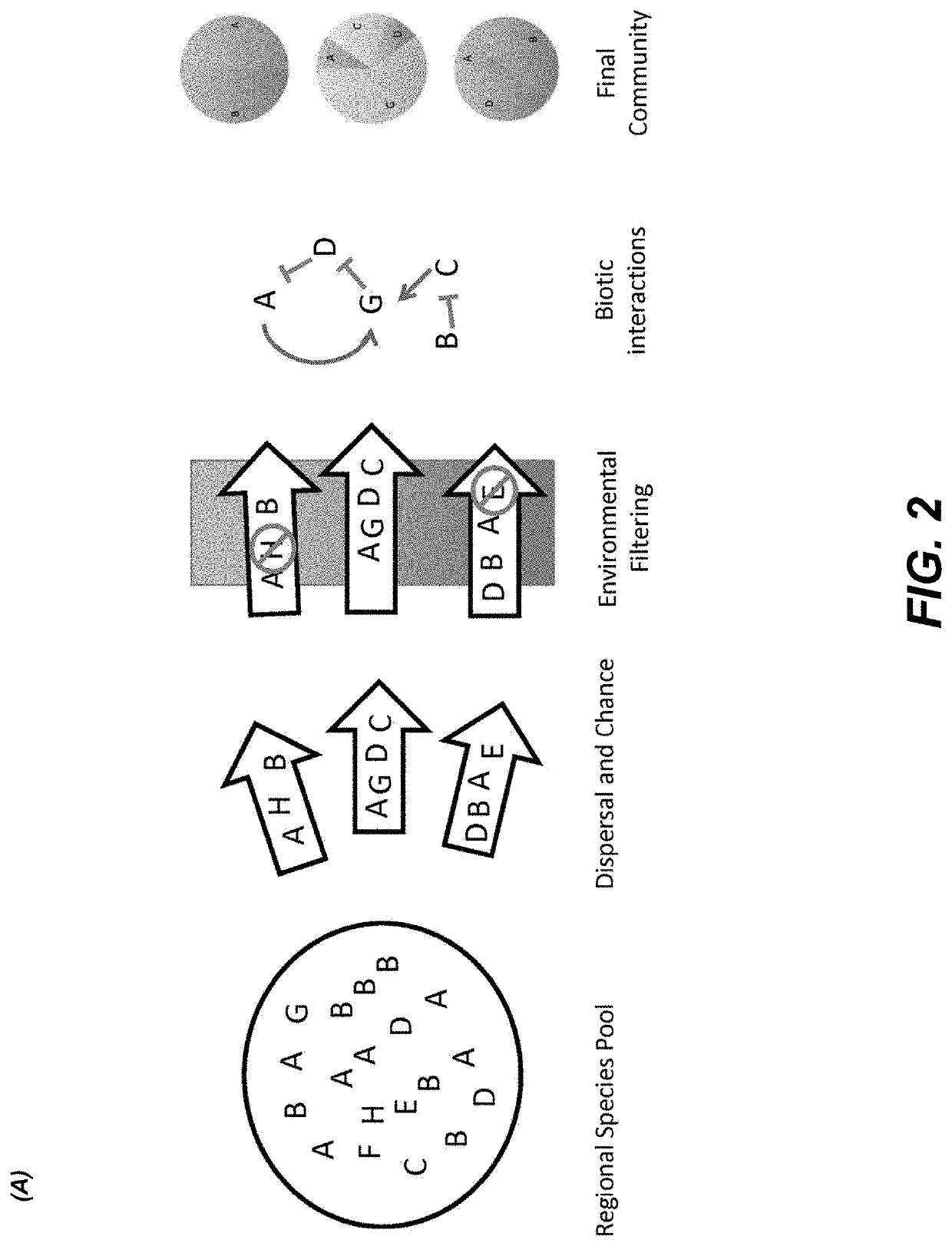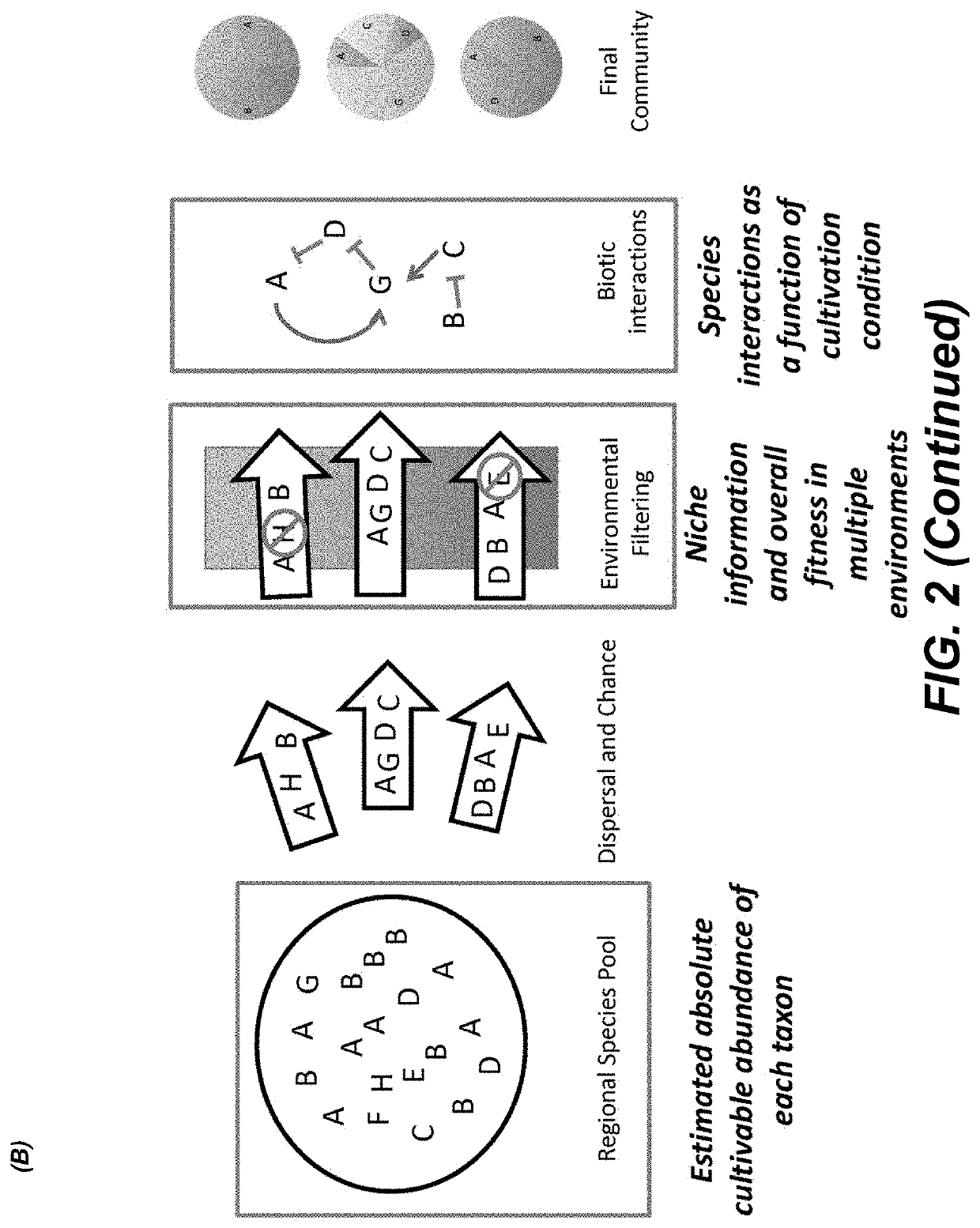Methods for identifying interactions amongst microorganisms
a technology of interactions and microorganisms, applied in the field of microorganism population analysis, can solve the problems of low throughput of co-incubation of organisms, limited current methods for predicting organism interactions, and inability to capture cultivability information
- Summary
- Abstract
- Description
- Claims
- Application Information
AI Technical Summary
Benefits of technology
Problems solved by technology
Method used
Image
Examples
example 1
Initial Sample Characterization and Estimates of Cultivable Populations
[0109]This example demonstrates initial sample characterization and estimates of cultivable populations based on OD600 measures and sequencing.
[0110]Sampling and Cell Counting
[0111]Groundwater was collected from an uncontaminated well (FW301: N35.94106884 and W84.33618124) at the Oak Ridge Field Research Site on May 5, 2015. The well was considered uncontaminated because, unlike many other wells at the Oak Ridge Field Research Site, it did not sample groundwater from the radioactive and hazardous contaminant plume emanating from the former waste disposal ponds. Prior to the collection of samples, approximately 10 liters (L) of groundwater was pumped until pH, conductivity, and oxidation-reduction (redox) values were stabilized. Following this purge, approximately 50 ml was pumped from the midscreen level into a sterilized serum vial minimizing residual headspace. The vial was sealed and shipped overnight at 4° C....
example 2
Probabilistic Immigration and Environmental Conditions Shape Microbial Community Structure
[0123]This example demonstrates probabilistic immigration and environmental conditions can shape microbial community structure as determined using 16S rRNA gene amplicon sequencing.
[0124]Based on 16S rRNA gene amplicon sequencing data, enrichment cultures started with the highest inoculum concentrations had the highest operational taxonomic unit (OTU) richness. The communities receiving the most concentrated inoculum had statistically similar numbers of OTUs under nitrate-reducing and aerobic conditions (t test, P=0.10), with the nitrate-reducing communities averaging 26.5 OTUs (n=94; standard deviation (SD), 11.27 OTUs) and the aerobic communities averaging 29.2 (n=96; SD, 10.53 OTUs). OTU richness declined in experiments that received less concentrated inocula (FIG. 6). In the 10−2 dilutions, the aerobic communities tended to have higher species richness than the nitrate-reducing communities ...
example 3
Rare Organisms can Dominate Cultures
[0139]This example demonstrates rare organisms can dominate cultures based on null model analysis.
[0140]Data Processing and Analysis
[0141]OTUs tables from QIIME were imported into R with custom Ruby scripts that assigned each well to the corresponding experiment (i.e., condition and dilution). As not all wells had positive growth but were extracted and sequenced anyway, it was useful to separate reads accumulated from either barcode sequencing errors or reagent contamination from true positive detected OTUs. These potential sources of error were controlled by sequencing and analyzing no-inoculum cultures and extraction-only blanks. First, R scripts were used to identify all OTUs that were found in the no-inoculum control samples and the extraction-blank samples. OTUs that represented more than 0.1% of summed reads in the no-inoculum control samples and the extraction-blank samples were called contaminants and excluded from the analysis. Next, in a...
PUM
| Property | Measurement | Unit |
|---|---|---|
| time durations | aaaaa | aaaaa |
| time durations | aaaaa | aaaaa |
| time durations | aaaaa | aaaaa |
Abstract
Description
Claims
Application Information
 Login to View More
Login to View More - R&D
- Intellectual Property
- Life Sciences
- Materials
- Tech Scout
- Unparalleled Data Quality
- Higher Quality Content
- 60% Fewer Hallucinations
Browse by: Latest US Patents, China's latest patents, Technical Efficacy Thesaurus, Application Domain, Technology Topic, Popular Technical Reports.
© 2025 PatSnap. All rights reserved.Legal|Privacy policy|Modern Slavery Act Transparency Statement|Sitemap|About US| Contact US: help@patsnap.com



